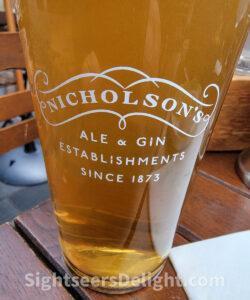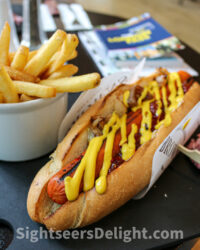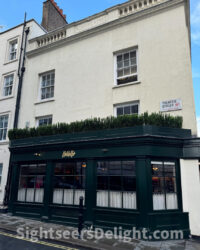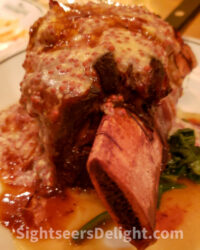
The Anchor is an iconic pub in the London Borough of Southwark, specifically in the Bankside area on the south bank of the River Thames. During Shakespeare’s time, this district was the center of theater, and the Thames served as London’s main highway. The Anchor is the only remaining riverside inn from that period, and it used to be a favorite spot for actors from neighboring playhouses such as the Globe, the Swan, and the Rose.…

The Coach & Horses Mayfair boasts a long and impressive history dating back to 1744, making it the oldest pub in Mayfair. As the only remaining establishment in this esteemed area of London that adheres to traditional pub-keeping, it stands out amidst the designer fashion houses and boutique shops. Locals and tourists flock to this exquisite pub to experience the allure of tradition.…

Granary Square Brasserie, an all-day dining haven that opened in December 2017, is located amid the lively bustle of London’s King’s Cross. The restaurant replaced the Grain Store restaurant. It offers a mix of British classics and international cuisine — and vegetarian and vegan dishes.

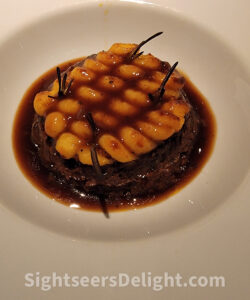


The Great Court Restaurant in the British Museum offers a refined dining experience in a one-of-a-kind atmosphere within the Queen Elizabeth II Great Court and beneath the Foster and Partners glass roof in the museum’s Great Court. Its menu includes traditional British and European fare, and afternoon tea is also available. The British Museum was founded in 1753 and opened its doors in 1759.…

Located at 1 King William Walk in Greenwich, London, The Greenwich Tavern is a pub with a deep history. It was previously known by several other names, including the Gloucester Hotel and Gloucester Arms.
Records show that in 1902, the Gloucester Hotel was built on land that previously housed a prison used to confine Protestant prisoners during the reign of Mary I in 1555.…

The Kings Arms was built in 1742 and was once known as the Three Jolly Butchers, which is more reflective of its traditional English menu.

The Argyll Arms dates to 1868, though a pub has apparently stood on the spot since 1740. Designer Robert Sawyer redesigned the Argyll Arms, named after the second Duke of Argyll, in 1895. The Duke lived in a mansion where the London Palladium now stands, and according to legend, a secret tunnel once connected the pub to the Duke’s mansion.

The Clachan dates to 1827 and was originally known as the Bricklayers Arms. It was a favorite haunt of the local police officers and firemen. It was renamed the Clachan in 1897 or 1898. Its name is Gaelic for “meeting place.” The pub was owned by Liberty’s until 1983, when it joined the Nicholson’s pubs.
